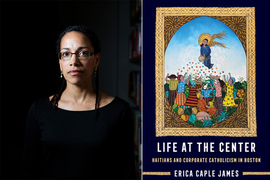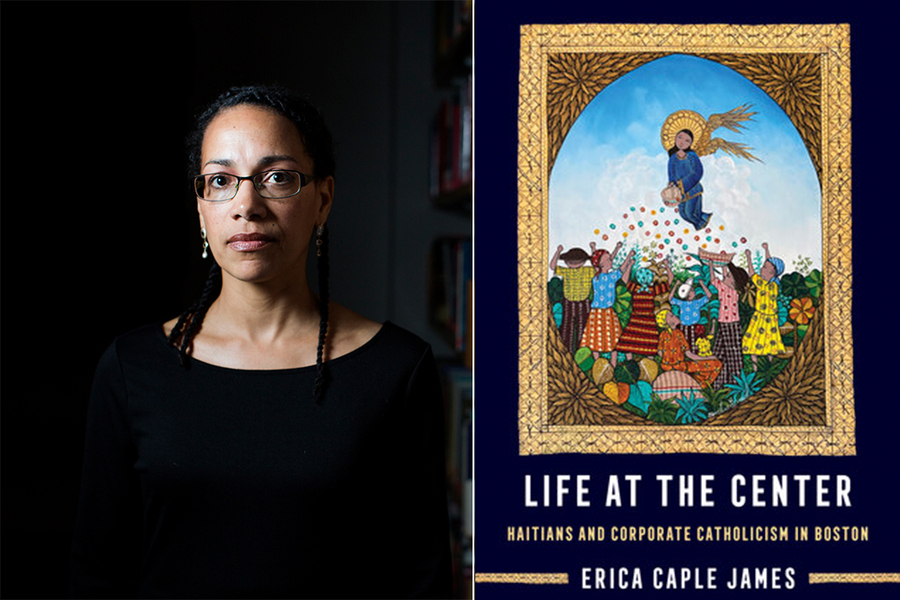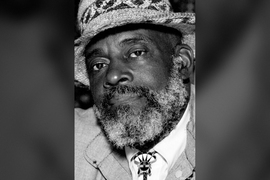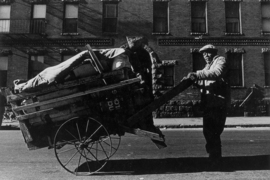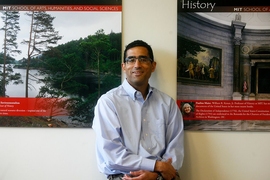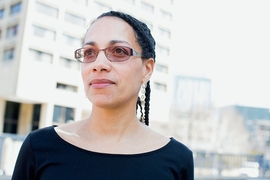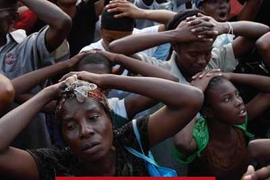When the Haitian Multi-Service Center opened in the Dorchester neighborhood of Boston in 1978, it quickly became a valued resource. Haitian immigrants likened it to Ellis Island, Plymouth Rock, and Haiti’s own Citadel, a prominent fort. The center, originally located in an old Victorian convent house in St. Leo Parish, provided health care, adult education, counseling, immigration and employment services, and more.
Such services require substantial funding. Before long, Boston’s Cardinal Bernard Francis Law merged the Haitian Multi-Service Center into the Greater Boston Catholic Charities network, whose deeper pockets kept the center intact. Law required that Catholic welfare promote the church’s doctrine. Catholic HIV/AIDS prevention programs started emphasizing only abstinence, not contraception. Meanwhile, the center also received state and federal funding that required grantees to promote medical “best practices” that contrasted with church doctrines.
In short, even while the center served as a community beacon, there were tensions around its funding and function — which in turn reflect bigger tensions about our civic fabric.
“These conflicts are about what the role of government is and where the line is, if there is a line, between public and private, and who ultimately is responsible for the health and well-being of individuals, families, and larger populations,” says MIT scholar Erica Caple James, who has long studied nongovernmental programs.
Now James has written a new book on the subject, “Life at the Center: Haitians and Corporate Catholicism in Boston,” published this spring by the University of California Press and offering a meticulous study of the Haitian Multi-Service Center that illuminates several issues at once.
In it, James, the Professor of Medical Anthropology and Urban Studies in MIT’s Department of Urban Studies and Planning, carefully examines the relationship between the Haitian community, the Catholic Church, and the state, analyzing how the church’s “pastoral power” is exercised and to whose benefit. The book also chronicles the work of the center’s staff, revealing how everyday actions are connected to big-picture matters of power and values. And the book explores larger questions about community, belonging, and finding meaning in work and life — things not unique to Boston’s Haitian Americans but made visible in this study.
Who makes the rules?
Trained as a psychiatric anthropologist, James has studied Haiti since the 1990s; her 2010 book “Democratic Insecurities” examined post-trauma aid programs in Haiti. James was asked to join the Haitian Multi-Service Center’s board in 2005, and served until 2010. She developed the new book as a study of a community in which she was participating.
Over several decades, Boston’s Haitian American population has become one of the city’s most significant immigrant communities. Haitians fleeing violence and insecurity often gained a foothold in the city, especially in the Dorchester and Mattapan neighborhoods as well as some suburbs. The Haitian Multi-Service Center became integral to the lives of many people trying to gain stability and prosperity. And, from residential clergy to those in need of emergency shelter, people were always at the site.
As James writes, the center “literally was a home for many stakeholders, and for others, a home away from a homeland left behind.”
Church support for the center worked partly because many Haitians felt aligned with the church, attending services and Catholic schools; in turn the church provided uniquely substantial support for the Haitian American community.
That also meant some high-profile issues were resolved according to church doctrine. For example, the center’s education efforts about HIV/AIDS transmission did not include contraception, due to the church’s emphasis on abstinence — which many workers considered less effective. Some staff members would even step outside the center to distribute condoms to community members, thus not violating policy.
“We started as a grassroots organization. … Now we have a church making decisions for the community,” said the former director of the center’s HIV/AIDS prevention programming. By 1996, the center’s adult literacy staff resigned en masse over policy differences, with some workers asserting in a 1996 memo that the church “has assumed a proprietary role over our work in the Haitian community.”
Coalition, not consensus
Another policy tension surrounding Catholic charities emerged after same-sex marriage became legal in Massachusetts in 2004. In 2005, a reporter revealed that over the previous 18 years the church had facilitated 13 adoptions of difficult-to-place children with gay couples in the state. After this practice became publicized, the church announced in 2006 that its century of adoption work would end, so as to not violate either church or state laws.
Ultimately, James says, “There are structural dimensions that were baked in, which almost inevitably produced tensions at the institutional or organizational level.”
And yet, as James chronicles attentively, there was hardly consensus about the church’s role in the center. The center’s Haitian American community members were a coalition, not a bloc; some welcomed the church’s presence at the center for spiritual or practical reasons, or both.
“Many Haitians felt there was value from [the center] being independent, but there are others who felt it would be difficult to maintain otherwise,” James says.
Some of the community members even expressed lingering respect for Boston’s Cardinal Law, a central figure of the Catholic Church abuse scandal that emerged in 2002; Law had personally championed the charitable work the church had been performing for Haitians in Boston. In this light, another question emerging from the book, James says, is, “What encourages people to remain loyal to an imperfect institution?”
Keepers of the flame
Some of the people most loyal to the Haitian Multi-Service Center were its staff, whose work James carefully details. Some staff had themselves previously benefitted from the center’s services. The institution’s loyal workers, James writes, served as “keepers of the flame,” understanding its history, building community connections, and extending their own identities through good works for others.
For these kinds of institutions, James notes, “They seem most successful when there is transparency, solidarity, a strong sense of purpose. … It [shows] why we do our jobs and what we do to find meaning.”
“Life at the Center” has generated positive feedback from other scholars. As Linda Barnes, a professor at the Boston University School of Medicine, has stated, “One could read ‘Life at the Center’ multiple times and, with each reading, encounter new dimensions. Erica Caple James's work is exceptional.”
What of the Haitian Multi-Service Center today? In 2006, it was moved and is now housed in Catholic Charities’ Yawkey Center, along with other entities. Some of the workers and community members, James notes in the book, consider the center to have died over the years, compared to its stand-alone self. Others simply consider it transformed. Many have strong feelings, one way or another, about the place that helped orient them as they forged new lives.
As James writes, “It has been difficult to reconcile the intense emotions shared by many of the Center’s stakeholders — confusion, anger, disbelief, and frustration, still expressed with intensity even decades later — alongside reminiscences of love, joy, laughter, and care in rendering service to Haitians and others in need.”
As “Life at the Center” makes clear, that intensity stems from the shared mission many people had, of finding their way in a new and unfamiliar country, in the company of others. And as James writes, in concluding the book, “fulfillment of a mission is never solely about single acts of individuals, but rather the communal striving toward aiding, educating, empowering, and instilling hope in others.”
